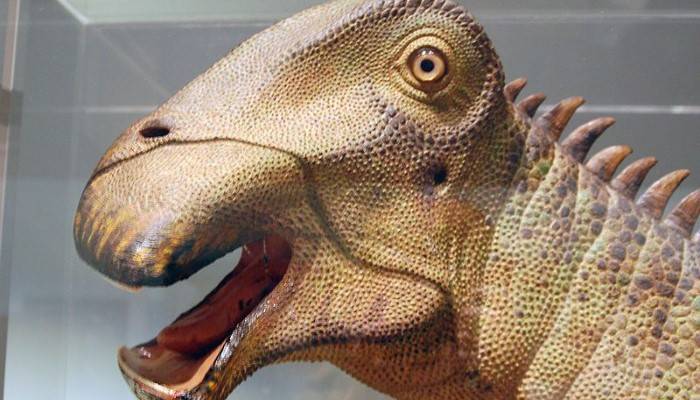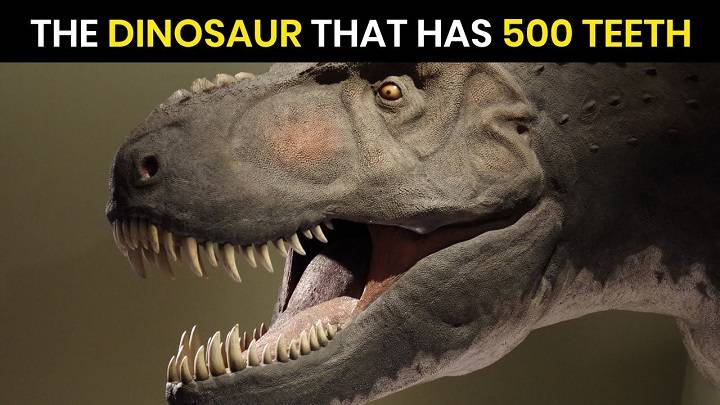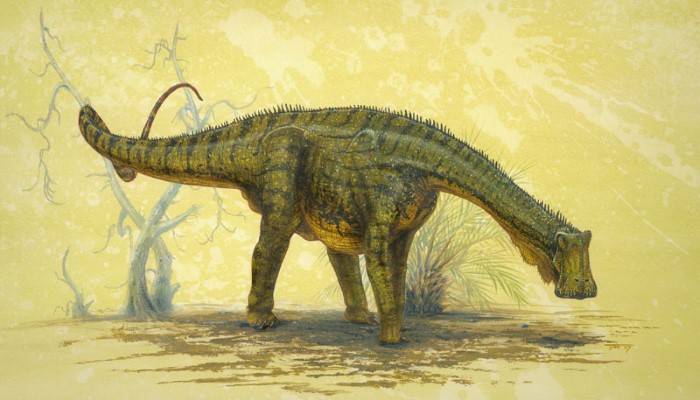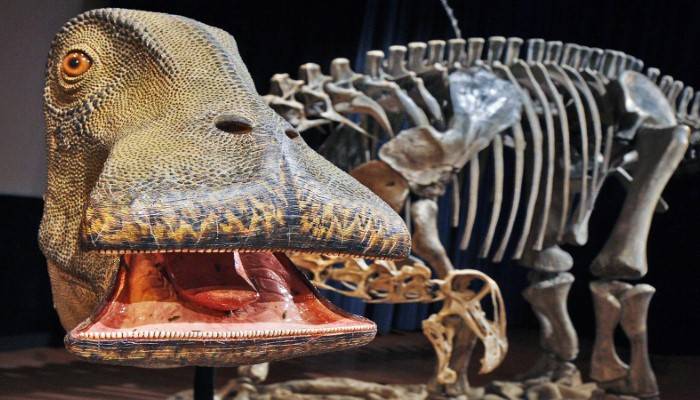Dinosaurs have always captivated the imagination of people worldwide, from children to paleontologists. Among the myriad of these fascinating creatures, one stands out for its unique dental structure: Nigersaurus, the dinosaur with 500 teeth. In this comprehensive blog post, we will delve into everything you need to know about Nigersaurus, from its discovery and physical characteristics to its diet and the environment it lived in.
Introduction to Nigersaurus

Discovery and Naming
Nigersaurus was discovered during the expeditions led by French paleontologist Philippe Taquet in the 1960s and later explored extensively by American paleontologist Paul Sereno in the late 1990s. The dinosaur was named Nigersaurus taqueti in honor of the country Niger, where it was found, and Taquet, who initially discovered it.
Significance of the Name
The name “Nigersaurus” means “Niger reptile.” Despite its somewhat simplistic name, Nigersaurus is a dinosaur of great interest due to its unusual physical characteristics, particularly its teeth.
Physical Characteristics
Size and Build
Nigersaurus was a relatively small sauropod compared to its more massive relatives like Brachiosaurus and Diplodocus. It measured about 9 meters (30 feet) in length and weighed around 4 tons. Its build was somewhat lighter and more agile, suggesting it was adapted for a specific type of feeding strategy.
Skull and Dental Structure
The most remarkable feature of Nigersaurus is its skull, which housed approximately 500 teeth. These teeth were arranged in a wide, straight-line, making its mouth look almost like a vacuum cleaner. The jaw structure allowed Nigersaurus to shear through vegetation efficiently.
Dental Replacement
Nigersaurus had a rapid tooth replacement rate. Each tooth could be replaced approximately every 14 days, ensuring it always had sharp teeth to feed on plants. This rapid replacement was crucial due to the wear and tear from constantly grazing on tough, fibrous plants.
Diet and Feeding Habits
Herbivorous Diet
Nigersaurus was a herbivore, meaning it primarily fed on plants. Its diet likely consisted of low-lying vegetation, including ferns, horsetails, and other ground-level plants.
Feeding Mechanism
The unique dental arrangement of Nigersaurus suggests it was a ground-level feeder. The broad muzzle and the arrangement of its teeth allowed it to crop plants close to the ground efficiently. It probably grazed much like a modern-day cow or sheep.
Comparison with Other Sauropods
Unlike other sauropods, which often had long necks to reach high vegetation, Nigersaurus was adapted to feeding at ground level. This niche specialization sets it apart from its relatives and highlights the diversity of sauropod feeding strategies.
Habitat and Environment
Geological Context
Nigersaurus lived during the mid-Cretaceous period, approximately 115 to 105 million years ago. This was a time when the environment was much different than today, with large areas of what is now the Sahara Desert covered in lush greenery and rivers.
Paleoenvironment
The environment of Nigersaurus was characterized by vast floodplains, river systems, and a warm, humid climate. This type of environment would have supported a diverse range of plant life, providing ample food for herbivorous dinosaurs like Nigersaurus.
Coexistence with Other Dinosaurs
Nigersaurus shared its habitat with a variety of other dinosaurs, including large predators like Spinosaurus and smaller herbivores. This coexistence would have involved complex ecological interactions, with each species occupying its specific niche.
Fossil Discoveries and Paleontological Research
Initial Discoveries
The first remains of Nigersaurus were discovered in the Elrhaz Formation in Niger, within a geological layer known as the Gadoufaoua region. These initial discoveries included partial skulls and postcranial bones.
Further Expeditions
Subsequent expeditions, particularly those led by Paul Sereno in the 1990s, uncovered more complete skeletons. These discoveries allowed paleontologists to reconstruct Nigersaurus in greater detail and understand its unique characteristics.
Significance of Discoveries
The discoveries of Nigersaurus have provided significant insights into sauropod diversity and evolution. They have also shed light on the adaptations required for different feeding strategies and the ecological niches occupied by these fascinating creatures.
Scientific Controversies and Debates
Dental Functionality
One of the main scientific debates surrounding Nigersaurus involves the functionality of its teeth. Some paleontologists have questioned how effective its dental arrangement would have been for feeding on tough vegetation, leading to discussions about its exact diet and feeding mechanisms.
Evolutionary Adaptations
The evolution of Nigersaurus’ unique dental structure also raises questions about the selective pressures and environmental conditions that led to such adaptations. This has implications for understanding sauropod evolution and the broader ecological context of the Cretaceous period.
Interpretation of Fossil Evidence
Interpreting fossil evidence always involves a degree of uncertainty, and Nigersaurus is no exception. Different interpretations of the available fossils can lead to varying reconstructions of its appearance and behavior, contributing to ongoing debates in the field of paleontology.
Nigersaurus in Popular Culture
Media Representation
Nigersaurus has appeared in various media, including documentaries and educational programs. Its distinctive appearance and fascinating dental structure make it a popular subject for illustrating the diversity of dinosaur life.
Public Fascination
The public fascination with dinosaurs like Nigersaurus is driven by their unique characteristics and the mysteries that still surround them. Exhibits featuring Nigersaurus skeletons or replicas are often major attractions in museums.
Educational Impact
Nigersaurus serves as an excellent educational tool for teaching about dinosaur diversity, evolution, and paleontology. Its unique features help capture the interest of students and the general public, making it easier to convey complex scientific concepts.
Technological Advances in Paleontology
CT Scanning and Imaging
Modern technology, such as CT scanning, has played a crucial role in studying Nigersaurus. These techniques allow paleontologists to examine the internal structure of fossils without damaging them, providing new insights into their anatomy and physiology.
3D Reconstruction
3D reconstruction techniques have enabled scientists to create detailed models of Nigersaurus, helping to visualize its appearance and study its functional morphology. These models are also valuable for public displays and educational purposes.
Genetic Research
While direct genetic research on dinosaurs is not possible, studying the genetic makeup of modern animals can provide clues about the evolutionary relationships between different species. This approach helps to place Nigersaurus within the broader context of sauropod evolution.
Future Directions in Nigersaurus Research
New Discoveries
Ongoing excavations and new discoveries continue to expand our understanding of Nigersaurus. Each new find adds to the body of knowledge and helps to refine existing theories about its biology and ecology.
Interdisciplinary Approaches
Integrating data from various scientific disciplines, including geology, biology, and chemistry, can provide a more comprehensive understanding of Nigersaurus and its environment. This interdisciplinary approach is becoming increasingly important in paleontology.
Public Engagement
Engaging the public in paleontological research through citizen science projects, educational programs, and museum exhibits can foster a greater appreciation for dinosaurs like Nigersaurus and the science behind their study.
The Legacy of Nigersaurus
Nigersaurus, with its unique dental structure and fascinating adaptations, stands out as a remarkable example of dinosaur diversity. Its discovery and subsequent research have provided valuable insights into sauropod evolution and the ecological dynamics of the mid-Cretaceous period.
As new technologies and discoveries continue to advance the field of paleontology, our understanding of Nigersaurus and its place in the prehistoric world will undoubtedly grow. This dinosaur’s legacy will continue to captivate scientists and the public alike, highlighting the endless wonders of the ancient world and the creatures that once roamed it.
Nigersaurus taqueti is a unique and fascinating dinosaur known for its 500 teeth, which were perfectly adapted for a herbivorous diet. Discovered in Niger, this mid-Cretaceous sauropod provides significant insights into the diversity of dinosaur life and the complexity of prehistoric ecosystems. Its rapid tooth replacement, ground-level feeding strategy, and the lush environment it inhabited paint a vivid picture of life millions of years ago. Through ongoing research and technological advancements, Nigersaurus continues to captivate and educate, offering a window into the rich tapestry of Earth’s distant past.




